Text
Improve Your Nursing Career with Professional Assignment Help
Entering the demanding field of nursing education needs more than just commitment; it also calls for a sophisticated comprehension of intricate medical ideas and the capacity to apply them in practical situations. Specialized nursing assignment help services become a ray of hope for nursing students who are struggling with complex tasks.

Deciphering the Intricacy of Nursing Tasks
Assignments for nurses can cover a wide range of subjects, including pharmaceutical interventions and patient care plans. Professional support offers direction by dissecting these intricacies into easily understood parts. Expert mentors who understand the complexities of the healthcare industry provide students with clarity and insights, enabling them to fully comprehend the complexities of their tasks. Nursing Assignment Writing Service

Customized Approaches for Academic Success
Nursing assignment assistance is a customized process rather than a one-size-fits-all method. These programs create an atmosphere where students can develop their areas of weakness and build on their strengths by customizing their support to meet their specific requirements. As a result, students not only fulfill their academic obligations but also demonstrate exceptional comprehension and application of nursing principles. Online Nursing Assignment Help

Beyond Grades: Developing Future Nurses' Confidence
Nursing assignment assistance is more than simply a means to a goal; it's also a confidence-boosting activity. These programs give aspiring healthcare workers the tools they need to confidently and skillfully navigate the changing and difficult field of nursing by giving them a platform to interact with seasoned mentors. Nursing Assignment Help
#nursing assignment help#nursing assignment helps#nursing assignment writing#nursing assignments help#online nursing assignment help#nursing assignment writing services#nursing assignment writing service uk#nursing assignment writing service#nursing assignments helps#nursing assignment
0 notes
Text
Madeleine Leininger's Theory of Transcultural Nursing
In the ever-evolving landscape of healthcare, providing culturally sensitive and competent care is becoming increasingly important. One theory that has greatly contributed to this understanding is Madeleine Leininger's Theory of Transcultural Nursing. Developed in the 1950s, this groundbreaking theory recognizes that culture plays a vital role in health and illness experiences, as well as in the delivery of nursing care. Leininger's work not only emphasizes the need for nurses to be aware of their own cultural biases but also highlights the importance of incorporating cultural beliefs and practices into patient care. This article explores the key concepts and applications of Leininger's Theory of Transcultural Nursing, shedding light on its significance in promoting equitable healthcare outcomes for diverse populations.
Overview of Madeleine Leininger and her theory
Madeleine Leininger's theory of transcultural nursing has made significant contributions to the field of healthcare. By emphasizing the importance of cultural competence and understanding in nursing practice, Leininger has helped to bridge gaps in care and improve patient outcomes. Her theory provides a framework for nurses to acknowledge and respect the diversity of individuals, families, and communities they serve. As healthcare continues to become more globalized and diverse, it is essential for nurses to embrace Leininger's principles and incorporate them into their practice. By doing so, we can ensure that all patients receive culturally sensitive care that meets their unique needs. Let us strive to be culturally competent nurses who provide holistic care to individuals from all walks of life. Online Nursing Assignment Help
youtube
Background: Historical context of transcultural nursing
The historical context of transcultural nursing navigates today's diverse and multicultural society. By recognizing and embracing the rich tapestry of different cultures, nurses can provide more effective and compassionate care to their patients. The evolution of transcultural nursing has been shaped by influential figures such as Madeleine Leininger, who championed the importance of cultural competence in healthcare. As we move forward, it is vital that healthcare institutions continue to prioritize education and training in transcultural nursing to ensure that all patients receive equitable care regardless of their background. Let us embrace the principles of transcultural nursing and work towards a future where diversity is celebrated and health disparities are eliminated.
Key Concepts: Explanation of Leininger's core ideas
Leininger's core ideas of transcultural nursing provide a comprehensive framework for understanding and addressing the diverse cultural needs of patients. By emphasizing the importance of cultural competence, Leininger highlights the need for healthcare professionals to be aware of their own biases and prejudices in order to provide effective care. Additionally, her concepts of cultural care preservation and maintenance, accommodation, and negotiation offer practical strategies for integrating cultural practices into healthcare settings. Overall, Leininger's work serves as a reminder that cultural considerations are essential in providing quality patient-centered care. To truly achieve equitable healthcare outcomes for all individuals, it is crucial for healthcare professionals to embrace transcultural nursing principles in their practice. Nursing Assignment Writing Service Uk
youtube
Application
Leininger's theory of transcultural nursing has a significant impact on nursing practice. By recognizing and understanding the importance of cultural diversity, nurses can provide holistic and culturally sensitive care to patients from various backgrounds. This theory helps nurses to be more aware of their own biases and assumptions, allowing for more effective communication and collaboration with patients. Additionally, it encourages nurses to actively seek knowledge about different cultures, enabling them to provide individualized care that respects the values and beliefs of each patient. By integrating Leininger's core ideas into nursing practice, healthcare professionals can work towards promoting health equity and reducing disparities among all populations.
Criticisms And Limitations Of The Theory
While Leininger's theory of transcultural nursing has made significant contributions to the field, it is not without its criticisms and limitations. Some critics argue that the theory oversimplifies cultural differences and fails to adequately address power dynamics and social inequalities that often underlie healthcare disparities. Additionally, there is a lack of empirical evidence supporting some of Leininger's core concepts, which raises questions about the validity and applicability of the theory in practice. Moreover, some practitioners find it challenging to operationalize the theory in a way that is truly culturally sensitive and inclusive. Despite these criticisms, however, it is important to acknowledge that Leininger's work has sparked important conversations about cultural competence in nursing care. Nursing Assignment Writing Service
youtube
Significance
The significance of Leininger's theory of transcultural nursing cannot be overstated. Her groundbreaking work has helped to bring attention to the importance of cultural competence in healthcare and has paved the way for a more inclusive and patient-centered approach to nursing care. By recognizing and understanding the unique cultural beliefs, values, and practices of patients, nurses are better equipped to provide culturally congruent care that respects their individuality. This theory has had a profound impact on nursing education, research, and practice, leading to improved health outcomes and increased patient satisfaction. As we move forward, it is essential that nurses continue to embrace and implement Leininger's theory in order to advance culturally competent care for all patients.
Conclusion
Madeleine Leininger's theory of transcultural nursing has made significant contributions to the field of healthcare. By emphasizing the importance of cultural competence and understanding in nursing practice, Leininger has helped to bridge gaps in care and improve patient outcomes. Her theory provides a framework for nurses to acknowledge and respect the diversity of individuals, families, and communities they serve. As healthcare continues to become more globalized and diverse, it is essential for nurses to embrace Leininger's principles and incorporate them into their practice. By doing so, we can ensure that all patients receive culturally sensitive care that meets their unique needs. Let us strive to be culturally competent nurses who provide holistic care to individuals from all walks of life. Nursing Assignment Help
#nursing assignment help#nursing assignment helps#nursing assignment writing#nursing assignments help#nursing assignments helps#online nursing assignment help#nursing assignment writing service#Online Nursing Assignment#Nursing Assignment Writing Service#Nursing Assignment Writing Services Uk#Nursing Assignment Writing Services#Youtube
0 notes
Text
Effect Of Good Nutrition On Wound Management
Wound management is a critical aspect of healthcare that aims to promote healing and prevent complications. While various factors contribute to successful wound healing, the role of nutrition cannot be overlooked. The impact of good nutrition on wound management goes beyond providing essential nutrients; it plays a pivotal role in enhancing the body's ability to heal and recover from injuries. Adequate intake of macro and micronutrients like proteins, vitamins, minerals, and antioxidants can significantly improve wound healing outcomes. In this article, we will explore the multifaceted effect of good nutrition on wound management and delve into its implications for patient care.

The importance of nutrition in wound healing
The body requires an adequate intake of nutrients to support the various stages of the healing process, from inflammation to tissue remodeling. A diet rich in protein, vitamins, and minerals can promote collagen synthesis, boost immune function, and enhance overall wound repair. Conversely, a deficiency in key nutrients can impair the healing process and prolong recovery time. Therefore, it is essential for healthcare professionals to emphasize the importance of proper nutrition and provide guidance on maintaining a well-balanced diet during the healing period. By prioritizing nutrition alongside medical treatments, individuals can optimize their chances of achieving optimal wound healing outcomes.
How proper nutrition supports the healing process
By providing the body with essential nutrients, vitamins, and minerals, we can enhance our immune system, promote tissue repair, and reduce inflammation. A well-balanced diet that includes a variety of fruits, vegetables, lean proteins, whole grains, and healthy fats can help speed up recovery time and improve overall health. It is important to remember that nutrition should be tailored to individual needs and medical conditions. Therefore, consulting with a healthcare professional or registered dietitian is highly recommended. Let us prioritize our health by embracing a nutritious lifestyle and nourishing our bodies to facilitate optimal healing results. Nursing Assignment Writing Service Uk

Nutrients essential for wound management
Nutrients such as protein, vitamin C, zinc, and omega-3 fatty acids are essential for promoting the healing process and reducing the risk of infection. It is important for individuals with wounds to consume a well-balanced diet that includes these nutrients in adequate amounts. Additionally, supplementation may be necessary in cases where dietary intake is insufficient. By prioritizing proper nutrition, healthcare professionals can help accelerate wound healing and improve patient outcomes. Therefore, it is crucial for healthcare providers to educate their patients about the importance of these nutrients and work collaboratively with them to develop a comprehensive plan to optimize wound healing through nutrition.
The role of protein in tissue repair
It is essential for the synthesis of new cells and the regeneration of damaged tissues. Protein provides the necessary building blocks for tissue repair, as it is involved in collagen production and wound healing. A diet rich in high-quality protein sources can greatly aid in the recovery process after injury or surgery. It is important to prioritize protein intake and ensure adequate consumption to support tissue repair. By understanding the importance of protein in tissue repair, individuals can make informed decisions about their diet and optimize their body's natural healing abilities. Nursing Assignment Writing Service

Vitamins and minerals that aid in wound healing
Vitamins and minerals play a crucial role in wound healing by supporting various stages of the process. Vitamin C helps with collagen synthesis and strengthens the immune system, while vitamin A promotes cell growth and tissue repair. Zinc is essential for protein synthesis and has anti-inflammatory properties, while iron aids in oxygen transport to promote tissue healing. Additionally, vitamin E acts as an antioxidant to protect cells from damage. Ensuring an adequate intake of these vitamins and minerals through a balanced diet or supplements can significantly enhance the body's ability to heal wounds effectively. Therefore, it is important to prioritize nutrition and consider incorporating these nutrients into our daily diet or consult with a healthcare professional for appropriate supplementation.
Hydration and its impact on wound recovery
Water plays a vital role in every aspect of the healing process, from maintaining skin elasticity to promoting cell regeneration. Dehydration can slow down the healing process and increase the risk of infection. It is important to drink enough water throughout the day to ensure adequate hydration. Additionally, incorporating foods with high water content and using moisturizers can also help keep the skin hydrated. By prioritizing hydration, individuals can enhance their body's natural healing abilities and promote faster wound recovery. Remember, staying hydrated is not only essential for overall health but also plays a critical role in supporting the body's healing processes. Nursing Assignment Help
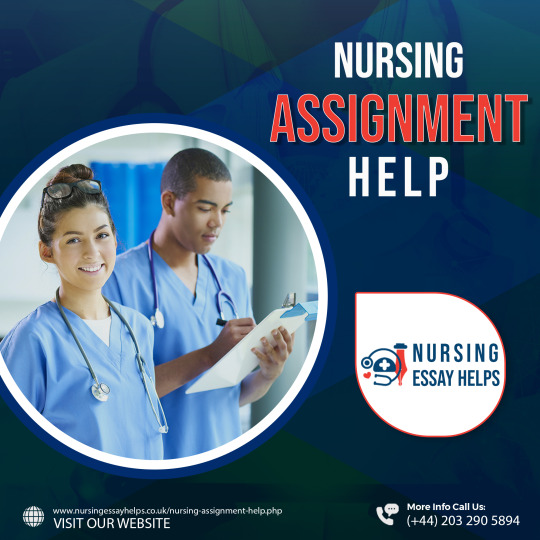
Conclusion Good nutrition plays a crucial role in wound management. By providing the body with essential nutrients, vitamins, and minerals, it can support the healing process and promote tissue regeneration. A well-balanced diet that includes protein, fruits and vegetables, whole grains, and healthy fats can provide the necessary building blocks for new tissues to grow. Additionally, maintaining proper hydration is important as it helps transport nutrients to the wound site. It is clear that good nutrition should be an integral part of any wound care plan. Therefore, healthcare professionals and individuals alike should prioritize nutrition education and incorporate healthy eating habits into their daily routines to optimize wound healing outcomes.
#Nursing Assignment Help#Nursing Assignment Writing Service#Nursing Assignment Writing Service Uk#Nursing Assignment Writing Services#Online Nursing Assignment Help#Nursing Assignment Helps#Nursing Assignments Helps#Nursing Assignments Help#Nursing Assignment Writing
0 notes
Text
Biopsychosocial Model Of Back Pain
Back pain is a pervasive and complex condition that affects millions of individuals worldwide, impacting their quality of life and productivity. While traditional medical models have predominantly focused on the physical aspects of back pain, the biopsychosocial model offers a more comprehensive understanding by considering the interplay between biological, psychological, and social factors. This innovative approach recognizes that back pain is not solely caused by structural abnormalities or tissue damage but can also be influenced by psychological factors such as stress, anxiety, and depression, as well as social factors like work environment, socioeconomic status, and cultural beliefs. By embracing this holistic perspective, healthcare professionals can provide more effective treatments that address all dimensions of an individual's experience with back pain for better long-term outcomes.
Understanding the complexity of back pain
Back pain is a complex condition that can have various causes and manifestations. It is crucial for individuals and healthcare professionals to recognize that back pain is not a one-size-fits-all issue and requires personalized assessment and treatment. By understanding the multifactorial nature of back pain, we can better address the underlying causes and implement appropriate strategies for prevention and management. Furthermore, ongoing research and advancements in technology are providing new insights into the intricacies of back pain, offering hope for improved diagnosis and treatment options in the future. Ultimately, it is important to prioritize our spinal health by maintaining good posture, engaging in regular physical activity, and seeking professional help when needed. Nursing Assignment Writing Services
Biological factors: Anatomy and physiology of the back
Understanding the biological factors involved in back pain is crucial for effective management and treatment of this common condition. The anatomy and physiology of the spine play a significant role in the development and progression of back pain. Factors such as spinal alignment, muscle imbalances, and disc degeneration can all contribute to discomfort and dysfunction. By addressing these underlying biological factors, healthcare professionals can develop targeted interventions to alleviate pain and improve function. It is important for individuals experiencing back pain to seek medical advice from qualified professionals who can assess their unique anatomy and physiology to create a personalized treatment plan. Don't let back pain hold you back – take control of your health by understanding and addressing its biological factors today.
Psychological factors
The psychological factors of mindset and emotions have a significant impact on back pain. Our mental state and emotional well-being can influence the perception and intensity of pain, as well as contribute to its chronicity. Negative emotions such as stress, anxiety, and depression can exacerbate back pain symptoms, while positive emotions and a positive mindset can help alleviate them. It is essential for healthcare professionals to consider these psychological aspects when diagnosing and treating back pain, as addressing them alongside physical factors can lead to more effective management and improved patient outcomes. Moreover, individuals suffering from back pain should be encouraged to seek support for their mental health and adopt strategies to cultivate a positive mindset and emotional well-being. Nursing Assignment Writing Service Uk
Social factors
Social factors play a significant role in the development and management of back pain. The environment in which we live and work can greatly impact our physical health, including our susceptibility to back pain. Additionally, our relationships and social support systems can either alleviate or exacerbate back pain symptoms. By recognizing the influence of these social factors, healthcare providers can better address the underlying causes of back pain and develop more comprehensive treatment plans. Furthermore, individuals themselves can take steps to create a supportive environment and nurture healthy relationships to promote optimal spinal health. It is essential that both healthcare providers and individuals alike prioritize addressing these social factors in order to effectively prevent and manage back pain.
Interactions between the three domains
The interactions between the three domains of back pain - physical, psychological, and social - are complex and interconnected. It is clear that these domains not only influence each other but also play a significant role in the development and persistence of back pain. Understanding these interactions is crucial for effective treatment and management of back pain. A holistic approach that addresses all three domains is essential for long-term relief and improved quality of life. By considering the physical, psychological, and social aspects of back pain, healthcare professionals can provide comprehensive care that targets the root causes and promotes overall well-being. Let us strive to adopt a multidisciplinary approach to back pain management, ensuring that individuals receive the support they need in all areas of their lives. Nursing Assignment Writing Service
Implications for treatment and management strategies
Understanding the implications for treatment and management strategies of back pain is crucial for healthcare professionals and patients alike. By recognizing the multifactorial nature of back pain and considering individualized approaches, we can optimize outcomes and improve the quality of life for those affected by this condition. The integration of evidence-based practices, such as physical therapy, exercise, and cognitive behavioral therapy, can play a pivotal role in reducing pain and disability. Additionally, addressing psychosocial factors and promoting self-management techniques are essential components of comprehensive care. Moving forward, it is imperative that further research is conducted to continue expanding our knowledge of effective treatment modalities.
Conclusion
The biopsychosocial model of back pain offers a comprehensive approach to understanding and treating this complex condition. By considering the biological, psychological, and social factors that contribute to back pain, healthcare professionals are better equipped to provide effective and personalized care. This model recognizes the importance of addressing not only the physical symptoms but also the emotional and social aspects that can impact a person's experience of pain. By adopting this holistic approach, patients can be empowered to take an active role in their own recovery and work towards long-term solutions for managing their back pain. It is essential for healthcare providers to integrate the biopsychosocial model into their practice in order to provide optimal care for individuals with back pain. Nursing Assignment Help
#Nursing Assignment Help#Nursing Assignment Writing Service#Nursing Assignment Writing Service Uk#Nursing Assignment Writing Services#Online Nursing Assignment Help#Nursing Assignment Helps#Nursing Assignments Helps#Nursing Assignments Help#Nursing Assignment Writing
0 notes
Text
Reflection On Care Of Surgical Drains
Surgical drains, those seemingly innocuous tubes that emerge from our bodies following a surgical procedure, play a crucial role in facilitating the healing process. Yet, their significance often goes unnoticed or underappreciated by patients and even some healthcare professionals. It is only when we find ourselves on the receiving end of these unassuming conduits that we truly grasp the vital function they perform – draining excess fluids and preventing complications such as infections and seromas. In this article, we delve into the world of surgical drains to shed light on their care and maintenance, unraveling the intricacies involved in ensuring optimal outcomes for patients post-surgery.
The importance of surgical drains
Surgical drains play a crucial role in post-operative care and can significantly improve patient outcomes. They effectively remove excess fluids and prevent the buildup of potentially harmful substances, reducing the risk of infections and complications. By promoting proper healing and minimizing the chances of post-operative complications, surgical drains contribute to faster recovery times and shorter hospital stays. It is important for healthcare professionals to carefully evaluate each patient's needs and consider the benefits of using surgical drains on a case-by-case basis. Furthermore, continued research and advancements in drain technology can further enhance their effectiveness and minimize potential risks. Therefore, it is imperative that healthcare providers remain vigilant in their use of surgical drains to ensure optimal patient care and outcomes. Nursing Assignment Writing Service

Types of surgical drains
Surgical drains serve to prevent the accumulation of fluid and promote healing by facilitating the removal of excess blood and other fluids. The types of surgical drains vary depending on their location and purpose, ranging from simple rubber tubes to more complex devices like Jackson-Pratt drains. It is important for healthcare professionals to have a thorough understanding of these different types in order to select the most appropriate drain for each individual patient. By using surgical drains effectively, healthcare providers can enhance patient outcomes and reduce the risk of complications. Therefore, it is imperative that healthcare professionals stay updated on the latest advancements and guidelines pertaining to surgical drain usage in order to provide optimal care for their patients. Nursing Assignment Writing Service UK

Care and maintenance of surgical drains
Proper care and maintenance of surgical drains is crucial for promoting healing and preventing complications. By following the guidelines provided by healthcare professionals, patients can ensure that their drains remain clean and functioning effectively. Regular monitoring of the drainage output, as well as proper cleaning of the drain site, can help prevent infection and other complications. It is important to keep in mind that each patient's situation may be different, so it is essential to follow any specific instructions given by the healthcare team. By taking these steps seriously, patients can contribute to their own recovery process and ultimately achieve better outcomes. Nursing Assignment Writing Services
Common complications and how to manage them
Proper care and maintenance of surgical drains is crucial for promoting healing and preventing complications. By following the guidelines provided by healthcare professionals, patients can ensure that their drains remain clean and functioning effectively. Regular monitoring of the drainage output, as well as proper cleaning of the drain site, can help prevent infection and other complications. It is important to keep in mind that each patient's situation may be different, so it is essential to follow any specific instructions given by the healthcare team. By taking these steps seriously, patients can contribute to their own recovery process and ultimately achieve better outcomes. Online Nursing Assignment Help

Patient education on drain care
Patient education on drain care for surgical drains is essential for ensuring proper healing and reducing the risk of complications. By providing clear instructions and guidance, healthcare professionals can empower patients to take an active role in their own recovery process. It is crucial to emphasize the importance of following these instructions diligently and seeking medical help if any concerns or issues arise. As patients become more knowledgeable about drain care, they can play a significant role in preventing infections, promoting wound healing, and minimizing discomfort. Let us prioritize patient education and work towards improving outcomes by equipping individuals with the knowledge they need to effectively manage their surgical drains. Nursing Assignment Help
Conclusion The care of surgical drains is a crucial aspect of postoperative management. Proper maintenance and monitoring of these drains can significantly reduce the risk of complications such as infection or blockage. Nurses play a vital role in educating patients about drain care and ensuring they are equipped with the necessary knowledge to manage them at home. Additionally, healthcare professionals need to be diligent in their assessments and documentation of drain output, appearance, and any signs of infection or complications. By prioritizing the care of surgical drains, we can optimize patient outcomes and promote a smooth recovery process. Let us continue to prioritize this aspect of patient care and strive for excellence in our practice.
#Nursing Assignment Help#Nursing Assignment Writing Service#Nursing Assignment Writing Service Uk#Nursing Assignment Writing Services#Online Nursing Assignment Help#Nursing Assignment Helps#Nursing Assignments Helps#Nursing Assignments Help#Nursing Assignment Writing
0 notes
Text
Providing Guidelines of Pain for Pain Management
Pain is a universal experience, yet its subjective nature often makes it challenging to measure and manage effectively. Whether acute or chronic, pain can significantly impact an individual's quality of life and overall well-being. As healthcare professionals strive to alleviate pain and improve patient outcomes, the need for clear guidelines in pain management becomes increasingly crucial. In this article, we will explore the importance of providing comprehensive guidelines for pain management practices, examining their role in enhancing patient care, promoting consistent treatment approaches, and addressing the complexities of pain assessment and treatment.
Types of Pain:
- Acute Pain
Acute pain is often characterized as a sharp and sudden sensation that typically lasts for a short period of time. It is usually caused by an injury or illness, and its purpose is to alert the body to potential damage. This type of pain is easily identifiable and can be localized to a specific area. For example, if you accidentally touch a hot stove, you will experience acute pain in your hand.
- Chronic Pain
On the other hand, chronic pain is defined as persistent discomfort that lasts for more than three months. Unlike acute pain, chronic pain does not serve any beneficial purpose and can significantly affect one's quality of life. This type of pain may result from an injury or illness, but it persists long after the initial cause has healed or resolved. Chronic pain can be challenging to manage and treat as it often becomes ingrained in one's nervous system. Nursing Assignment Writing Service

Understanding the different types of pain is crucial because they have distinct characteristics and implications for treatment approaches. While acute pain serves as a warning signal, chronic pain requires long-term management strategies to mitigate its impact on daily functioning. By recognizing these differences, individuals experiencing either form of pain can seek appropriate medical attention and support tailored to their specific needs.
Guidelines for Assessing Pain:
- Self-reporting
Assessing pain is a complex task that healthcare professionals must undertake to ensure optimal care for their patients. Self-reporting is often considered the gold standard for assessing pain, as it allows individuals to describe their experience in their own words. This method provides valuable insights into the intensity, location, and quality of the pain experienced by the patient. It also helps healthcare professionals understand how pain may be impacting a person's daily activities and overall well-being.
- Observation
However, self-reporting may not always be possible or reliable, especially in certain populations such as infants or people with cognitive impairments. In such cases, observation becomes an important tool in assessing pain. By carefully observing facial expressions, body language, and vocalizations, healthcare providers can gain valuable information about a patient's level of distress and discomfort. Furthermore, consistent observation over time can help identify changes in these indicators that may indicate improvement or worsening of pain. Nursing Assignment Help

It is worth noting that self-reporting and observation are not separate entities but rather complementary approaches to comprehensively assess pain. While self-reporting provides subjective insights from patients themselves, observation adds an objective component from the perspective of healthcare providers. Combining these two methods enhances our ability to accurately evaluate and manage pain levels in diverse populations while considering individual differences in communication styles and cultural beliefs around expressing pain experiences. By valuing both self-reporting and observation equally while assessing pain, we can provide better care tailored to each person's unique needs.
Treatment Options:
When it comes to treating certain medical conditions, there are often two primary options: medications and physical therapy. Nursing Assignment Helps
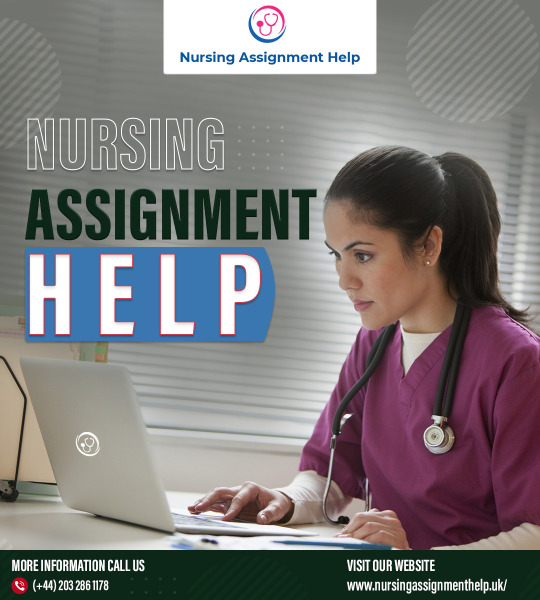
- Medications
Medications provide a convenient way to manage symptoms and can be effective for pain relief or reducing inflammation. However, it's important to note that medications may only provide temporary relief and often come with side effects. On the other hand, physical therapy focuses on improving mobility, strength, and function through targeted exercises and techniques. This non-invasive approach not only addresses the root cause of the condition but also helps prevent future issues from arising.
- Physical therapy
While medications may offer quick relief, relying solely on them can have long-term consequences. Prolonged use of certain drugs can lead to dependency or tolerance buildup, requiring higher dosages for the same effect. Furthermore, some individuals may experience adverse reactions or allergies to medication ingredients. Physical therapy offers an alternative with its focus on natural healing methods without any pharmaceutical intervention. By working closely with a trained therapist, patients can learn exercises specific to their condition that help build strength and flexibility while reducing pain without any harmful side effects. Online Nursing Assignment Help

When considering treatment options for various conditions, it is crucial to weigh both medication-based approaches and physical therapy interventions carefully. While medications might provide immediate relief from symptoms, they come with potential side effects and risks associated with long-term use. Physical therapy provides a holistic approach focusing on addressing the underlying causes of conditions and promoting overall health without relying heavily on pharmaceuticals.
Non-pharmacological Approaches:
- Cognitive Behavioral Therapy (CBT)
Non-pharmacological approaches for managing pain have gained significant attention in recent years, as patients and healthcare providers seek alternatives to traditional medications. Among these approaches, Cognitive Behavioral Therapy (CBT) has emerged as a particularly effective method for alleviating chronic pain. Unlike medication, CBT addresses the psychological and emotional aspects of pain by helping individuals change negative thought patterns and behaviors that contribute to their discomfort. By challenging irrational beliefs and developing healthy coping strategies, CBT empowers individuals to better manage their pain and improve their overall quality of life. Nursing Assignment Writing Services

- Massage therapy
Another non-pharmacological approach worth exploring is massage therapy. While often associated with relaxation and stress relief, massage therapy can also provide significant relief from both acute and chronic pain conditions. The physical manipulation of soft tissues through various techniques helps improve blood flow, reduce muscle tension, and promote the release of endorphins – the body's natural painkillers. In addition to its physiological benefits, massage therapy also offers emotional support by providing a safe space for individuals to relax, unwind, and disconnect from their everyday stressors.
The Role of Healthcare Providers:
- Creating individualized pain management plans
Healthcare providers play a crucial role in effectively managing pain and improving the quality of life for their patients. One important aspect of this role is creating individualized pain management plans tailored to each patient's unique needs and circumstances. By understanding that no two individuals experience pain in the same way, healthcare providers can develop personalized strategies that address not only the physical aspects of pain but also its emotional and psychological effects. Nursing Assignment Writing Service Uk

A key component of an individualized pain management plan is taking into account the patient's medical history, including any underlying conditions or past experiences with pain management techniques. This holistic approach allows healthcare providers to consider various factors such as allergies, interactions with other medications, and previous successes or failures when designing a suitable treatment plan. Additionally, by involving the patient in decision-making processes, healthcare providers can ensure that their preferences and goals are considered throughout their treatment journey.
Creating individualized pain management plans also requires healthcare providers to stay informed about new advances in research and technology. With ongoing developments in fields such as pharmacology, psychology, and alternative therapies, it is crucial for providers to be up-to-date on the latest evidence-based practices. By staying informed about emerging treatments or approaches to pain management, healthcare professionals can offer their patients a wider range of options that may lead to better outcomes. Nursing Assignment Help
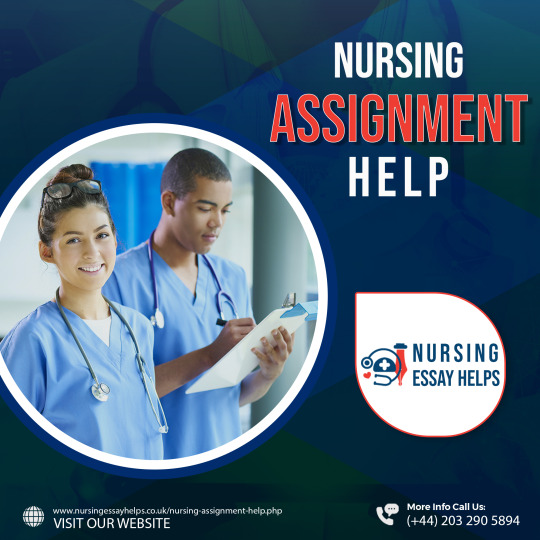
Conclusion: In conclusion, providing guidelines of pain for pain management is crucial to ensure that patients receive appropriate and effective treatment. These guidelines help healthcare professionals make informed decisions about the best course of action for each individual patient, taking into account their unique circumstances and needs. By following these guidelines, healthcare providers can minimize the risk of under-treating or over-treating pain, leading to improved patient outcomes and quality of life. It is important for healthcare institutions and organizations to implement these guidelines systematically and consistently across all settings to ensure that all patients have access to optimal pain management. Together, let us prioritize the implementation of comprehensive pain management guidelines to ensure that every patient receives the care they deserve.
#nursing assignment help#online nursing assignment help#nursing assignment helps#nursing assignment writing#nursing assignments help#nursing assignment writing service#nursing assignments helps#Nursing Assignment Writing#Nursing Assignments Help#Nursing Assignments Helps#Nursing Assignment Help#Nursing Assignment Helps
0 notes
Text
Strengthening The Orientation Process
Starting a new job can be both exciting and overwhelming. From learning about the company culture to understanding job responsibilities, there is a lot to absorb during the orientation process. However, many organizations fail to prioritize this crucial stage of onboarding, resulting in disengaged employees and increased turnover rates. To address this issue, it is imperative for companies to strengthen their orientation process and ensure that new hires feel supported and well-equipped from day one. By investing time and resources into developing an effective orientation program, companies can set the stage for long-term success and create a positive first impression that will leave employees feeling motivated and confident in their roles. Nursing Assignment Writing

The importance of a strong orientation process
A strong orientation process is crucial for the success of both new employees and the organization as a whole. It sets the tone for their entire experience and ensures they feel welcomed and supported from day one. By providing comprehensive training, introducing company culture and values, and connecting new hires with key resources and colleagues, organizations can ensure that employees are equipped with the knowledge and tools they need to thrive in their roles. Additionally, a well-structured orientation process helps to reduce turnover rates and improve employee retention. Therefore, it is imperative for companies to invest time and effort into developing a robust orientation program that prioritizes employee engagement and sets them up for long-term success within the organization. Nursing Assignment Helps

Benefits of a comprehensive orientation program
A comprehensive orientation program offers numerous benefits for both new employees and employers. It helps new hires feel more comfortable and confident in their roles, leading to increased job satisfaction and productivity. Additionally, it ensures that employees understand the company's values, goals, and expectations from day one. This can lead to a more positive work culture and higher employee retention rates. By investing time and resources into developing a thorough orientation program, organizations can set their employees up for long-term success and create a strong foundation for growth. Therefore, it is essential for businesses to prioritize the implementation of comprehensive orientation programs for all new hires. Online Nursing Assignment Help

Key components of an effective orientation process
An effective orientation process is crucial for setting employees up for success in their new roles. By providing clear communication, comprehensive training, and opportunities for socialization, organizations can ensure that employees feel supported and equipped to contribute to the company's goals. Additionally, regular check-ins and feedback sessions allow for ongoing development and adjustment as needed. Investing time and resources into a well-designed orientation process not only helps new hires integrate smoothly into the organization but also increases employee engagement and retention. Therefore, it is imperative that companies prioritize creating and implementing a robust orientation program to maximize the potential of their workforce. Nursing Assignment Writing Services

Strategies for enhancing the orientation experience
The orientation experience plays a crucial role in helping new employees feel welcomed and integrated into their organization. By implementing these strategies – providing comprehensive information, offering mentorship programs, fostering social connections, utilizing technology, and encouraging feedback – organizations can enhance their orientation programs to ensure a positive onboarding experience. This not only improves employee satisfaction and retention but also boosts productivity and overall organizational success. As companies strive to attract and retain top talent in today's competitive job market, investing in a well-designed orientation program should be a priority. So, let's take action and implement these strategies to create an exceptional orientation experience that sets employees up for long-term success. Nursing Assignment Writing Service Uk

Evaluating the success of the orientation program
The orientation program has proven to be a valuable tool for new employees in acclimating to their roles and responsibilities. The program's comprehensive approach, including presentations, workshops, and mentorship opportunities, has effectively provided the necessary information and support to ensure a smooth transition into the organization. Feedback from participants has been overwhelmingly positive, with many expressing gratitude for the guidance received during this critical period. However, there is always room for improvement. Regular evaluation and feedback collection will help identify areas of strength and weakness within the program, allowing for continuous enhancements that will better meet the needs of new hires. Join us in our commitment to ongoing improvement by providing your valuable insights and suggestions. Nursing Assignment Writing Service

Conclusion:
In conclusion, a strong orientation process is crucial for the success of both new employees and the organization as a whole. By providing comprehensive training and information, employers can ensure that new hires are well-prepared to contribute to the company from day one. Additionally, an effective orientation process helps to foster a positive company culture and set clear expectations for performance and behavior. Investing time and resources into developing a robust orientation program will pay off in the long run, resulting in higher employee satisfaction, improved productivity, and reduced turnover. Therefore, it is essential that organizations prioritize strengthening their orientation process as part of their overall workforce development strategy. Nursing Assignment Help
#Nursing Assignment Help#Nursing Assignment Writing Service#Nursing Assignment Writing Service Uk#Nursing Assignment Writing Services#Online Nursing Assignment Help#Nursing Assignment Helps#Nursing Assignments Helps#Nursing Assignments Help#Nursing Assignment Writing#Nursing Assignment#Help With Nursing Assignment#Online Nursing Assignment Uk#Nursing Assignment Help Online
0 notes
Text
Challenges Facing The Health Care Industry
The health care industry is one of the most crucial sectors in society, aimed at providing essential medical services to individuals in need. However, despite its importance, this industry faces numerous challenges that hinder its ability to deliver effective and efficient care. These challenges arise from various factors, including technological advancements, demographic changes, financial constraints, and evolving patient needs and expectations.
From an increasingly aging population to the rapid development of new medical technologies, the healthcare industry must continuously adapt to meet the evolving demands placed upon it. Technological advancements have revolutionized medical treatments and procedures but have also introduced complexities for healthcare providers. Furthermore, shifting demographics pose unique challenges as a larger elderly population requires specialized care while straining limited resources.
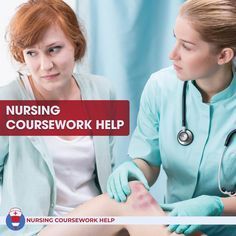
Rising costs
The rising costs in the healthcare industry have become a significant financial burden for both patients and providers. With the increasing expenses of medical treatments, medications, and insurance premiums, patients are finding it increasingly difficult to access necessary healthcare services. Many individuals are forced to make tough choices between paying for medical bills or meeting other everyday expenses.
In addition to the financial strain on patients, healthcare providers are also facing challenges due to escalating costs. Hospitals, clinics, and private practitioners struggle to maintain profitability while providing quality care. Rising overhead costs such as equipment, technology upgrades, and staffing demands put additional pressure on already strained budgets. As a result, many providers find themselves having to make tough decisions about resource allocation and patient care.
Overall, the mounting financial burden in the healthcare industry has created a complex dilemma that affects both patients and providers alike. Nursing Assignment Help.
Lack of access
Lack of access to affordable healthcare is a pressing issue in the health care industry. Many individuals, especially those from low-income backgrounds or without adequate insurance coverage, struggle to find and afford necessary medical services. With skyrocketing costs of healthcare, limited availability of affordable care has become a significant barrier for countless people in need.
One contributing factor to this problem is the rising price of medical treatments and prescription medications. Pharmaceutical companies often set exorbitant prices for their drugs, making them unaffordable for many individuals. This leaves patients with no choice but to either forego necessary treatments or accrue substantial debt trying to pay for them. Moreover, specialized medical procedures such as surgeries or diagnostic tests can also be prohibitively expensive, further limiting access for those who cannot afford such high costs.

Aging population
The aging population is placing an increasingly high demand on health services, creating new challenges and opportunities for the healthcare industry. As people live longer and medical advancements continue to improve, there is a growing need for specialized care tailored to the unique needs of elderly individuals. This shift in demographics has led to a surge in demand for services such as home healthcare, assisted living facilities, and long-term care centers.
With the increasing number of older adults requiring medical attention, healthcare providers are faced with the task of meeting their complex healthcare needs. This includes addressing chronic conditions like heart disease, diabetes, and dementia that are more prevalent among seniors. The aging population also brings forth psychological and social challenges that require specialized care. Healthcare providers must adapt by developing innovative strategies to meet these evolving demands while ensuring quality patient care remains a top priority. Nursing Assignment Writing Service.
Technological advancements
Technological advancements have revolutionized the way healthcare is delivered and managed. From electronic health records to telemedicine, these innovations have improved efficiency, accuracy, and accessibility in the healthcare industry. However, integrating and implementing new technologies into existing systems can often pose significant challenges.
One major challenge faced by the healthcare industry is interoperability - the ability of different technology systems to communicate and share data seamlessly. Many hospitals and clinics use different software platforms for various functions such as patient management, billing, and laboratory tests. Integrating these disparate systems becomes a complex task that requires meticulous planning and coordination. Moreover, ensuring secure data exchange between different stakeholders involved in patient care adds another layer of complexity to the integration process.
Additionally, training staff on how to effectively utilize new technologies poses a challenge in implementation. Healthcare professionals need to be proficient in using technology tools to ensure efficient workflows without compromising patient safety or data privacy.
Workforce shortages
Workforce shortages have become a pressing issue in the health care industry, placing an immense strain on health care professionals. As the demand for quality medical services continues to rise, there simply aren't enough skilled individuals to meet this growing need. This shortage is particularly evident in specialized fields such as nursing, where hospitals and clinics are struggling to fill vacancies.
The consequences of these workforce shortages are far-reaching and can negatively impact patient care. With fewer professionals available, those who remain in the field are often overloaded with work, leading to increased stress levels and higher rates of burnout. Additionally, longer working hours can compromise the overall quality of care provided as exhausted personnel may be more prone to errors or lack the necessary time to dedicate to each patient's needs.

Government regulations
Government regulations play a crucial role in shaping industry practices, particularly in the health care sector. These regulations are designed to ensure patient safety, improve quality of care, and prevent fraudulent activities. From licensing requirements for healthcare professionals to mandatory accreditation for hospitals and clinics, these regulations aim to maintain high standards within the industry.
One major impact of government regulations on the health care industry is increased accountability. Through stringent oversight and regulatory bodies such as the Food and Drug Administration (FDA), government agencies enforce guidelines that hold healthcare providers responsible for their actions. This not only ensures that medical practitioners adhere to ethical standards but also helps protect patients from substandard or unsafe practices.
Furthermore, government regulations have led to a significant shift towards electronic health records (EHRs) in recent years. The Health Insurance Portability and Accountability Act (HIPAA) mandates secure storage and sharing of patient information electronically. Nursing Assignment Writing Service Uk.
Conclusion The healthcare industry is facing numerous challenges that require urgent attention and innovative solutions. The rising costs of healthcare, limited access to quality care for underserved populations, the aging population and associated chronic diseases, and the rapid advancements in technology are just a few of the obstacles that must be overcome. It is crucial for policymakers, healthcare professionals, and stakeholders to work together to address these challenges and ensure the delivery of affordable, accessible, and high-quality care for all individuals. By investing in preventive measures, promoting collaboration between different sectors, and embracing technological advancements such as telemedicine and artificial intelligence, we can overcome these challenges and create a healthier future for everyone.
#nursing assignment writing service#nursing assignments help#nursing assignments helps#nursing dissertation writing#nursing assignment writing#nursing assignment helps#nursing dissertation help#online nursing assignment help#nursing assignment help#nursing dissertation writing service
0 notes
Text
Importance Of Clinical Handover Nursing
Clinical handover is a critical process in nursing that involves the transfer of patient information and responsibility from one care provider to another. It plays a vital role in ensuring the continuity and safety of patient care, as well as promoting effective communication and collaboration among healthcare professionals. The significance of clinical handover cannot be overstated, as it directly impacts the quality and outcomes of patient care. This article will explore the importance of clinical handover in nursing practice, highlighting its benefits, challenges, and strategies for improvement. By understanding the value of this process, nurses can enhance their skills in effectively transferring patient information, ultimately leading to improved patient outcomes and experiences.

Understanding clinical handover and its significance
Clinical handover is a critical process in healthcare that involves the transfer of patient information, responsibility, and accountability from one healthcare professional to another. This exchange of information takes place at various points within the patient's journey, such as during shift changes or when transferring care from one department to another. The purpose of clinical handover is to ensure continuity of care, promote patient safety, and facilitate effective communication between healthcare teams. It plays a crucial role in providing high-quality healthcare services and reducing medical errors.
The significance of clinical handover cannot be overstated. A seamless handover process ensures that important patient information is accurately communicated, minimizing the risk of adverse events occurring due to miscommunication or lack of crucial details. It allows for timely interventions by new caregivers who are informed about the patient's condition and needs. Nursing Dissertation Help.
Definition of clinical handover in nursing
Clinical handover in nursing is a vital process that ensures the safe and effective transfer of patient care between healthcare professionals. It involves the accurate exchange of information, including patient history, treatment plans, and any changes in condition. Clinical handover promotes continuity of care and reduces the risk of errors or adverse events. It requires clear communication, active listening, and standardized protocols. Therefore, it is essential for healthcare organizations to prioritize the development and implementation of comprehensive clinical handover practices to improve patient outcomes and enhance the overall quality of care. Let us all work together to make clinical handover a priority in our nursing practice.

Importance of effective communication during handover
Effective communication during handover nursing is crucial for ensuring patient safety and continuity of care. Handovers are the exchange of information between healthcare professionals at shift changes or when transferring a patient from one department to another. It provides an opportunity to relay important patient details, such as their medical history, treatment plans, and any changes in their condition. However, if communication is ineffective or incomplete during handover nursing, it can lead to misunderstandings, errors in medication administration, delays in treatment, and ultimately compromise patient outcomes.
One key reason why effective communication is essential during handover nursing is that it promotes collaboration and teamwork among healthcare professionals. By sharing accurate and comprehensive information about a patient's condition, all members of the healthcare team can work together towards providing quality care. This includes nurses being able to anticipate potential problems or complications based on the information received during handover and taking appropriate measures to prevent them.
Enhancing patient safety through accurate handover process
Patient safety is a critical concern in healthcare settings, and one area that requires utmost attention is the handover process. Accurate handovers are essential for seamless transitions of care and to prevent any errors or miscommunication that can jeopardize patient well-being. By enhancing the handover process, healthcare providers can significantly improve patient safety outcomes.
An accurate handover ensures that crucial information about a patient's condition, treatment plan, medications, and any specific needs or concerns are effectively communicated between healthcare professionals. This includes verbal exchange as well as written documentation. With clear and concise communication during handovers, the risk of misunderstanding or overlooking important details is minimized. This ultimately helps to prevent adverse events such as medication errors, delays in treatment, or inappropriate interventions.
Moreover, an accurate handover process promotes continuity of care by ensuring that all relevant information is passed on from one healthcare provider to another seamlessly. Nursing Dissertations Helps.
The role of technology in improving clinical handover
The role of technology in improving clinical handover is becoming increasingly vital in the healthcare industry. With the ever-growing complexity of patient care, it is crucial for healthcare professionals to have efficient and accurate methods of sharing patient information during handover. Technology has provided innovative solutions that streamline this process, ensuring better communication between healthcare teams and ultimately leading to improved patient outcomes.
One way technology has revolutionized clinical handover is through electronic health records (EHRs). EHRs allow for seamless sharing of patient data across different systems and departments, eliminating the need for time-consuming paperwork or manual transfer of information. This not only reduces the risk of errors but also provides a comprehensive overview of a patient's medical history, medications, and treatment plans at any given moment.

Challenges faced in clinical handover and how to overcome them
Clinical handover is a critical process in healthcare that involves the transfer of patient information, responsibility, and care from one healthcare provider to another. However, this essential step often faces numerous challenges that can hinder effective communication and compromise patient safety. One significant challenge is the lack of standardized protocols for handovers across different healthcare settings. Without consistent guidelines, there is a higher risk for miscommunication, important details being overlooked or forgotten, and crucial patient information being lost in translation.
Another common obstacle in clinical handover is time constraints. Healthcare professionals are often under pressure to complete handovers quickly due to heavy workloads and demands for efficiency. This rushed approach can lead to incomplete or inaccurate information being exchanged, potentially jeopardizing patient care. Additionally, language barriers among healthcare providers who come from diverse backgrounds can further complicate the handover process and increase the chances of misunderstandings or misinterpretations. Nursing Dissertation Writing Service.
Conclusion
In conclusion, the clinical handover in nursing is of utmost importance for patient safety and continuity of care. It serves as a crucial communication tool between healthcare professionals, ensuring that vital patient information is accurately shared and understood. Effective handovers can prevent errors, reduce adverse events, and improve patient outcomes. Nurses play a vital role in facilitating successful handovers by using standardized protocols, clear documentation, and effective communication techniques. By recognizing the significance of clinical handover and actively participating in its implementation, nurses can make a significant impact on patient care. Therefore, it is imperative that nurses prioritize the development and refinement of their handover skills to ensure optimal patient safety and quality of care.
#nursing assignment writing service#nursing assignments help#nursing assignment writing#nursing dissertation help#nursing assignments helps#nursing dissertation writing service#nursing assignment helps#nursing dissertation writing#online nursing assignment help#nursing assignment help
0 notes
Text
Key differences between acute and chronic pain
Pain is an unpleasant sensation that can occur due to various reasons such as injury, disease, or inflammation. It is a complex perception that involves the nervous system and can be classified into two broad categories: acute pain and chronic pain. Acute pain is usually short-lived and occurs suddenly due to tissue damage or injury. On the other hand, chronic pain persists for a long time, often beyond the expected healing time of an injury or illness. Understanding the key differences between these two types of pain is crucial in managing them effectively.
Acute pain typically arises from damaged tissue or nerve endings and serves as a warning signal to protect the body from further harm. It usually resolves within days or weeks as the underlying cause heals.

Duration: Short-term vs. long-term pain
Pain is an unpleasant sensation that everyone experiences at some point in their lives. The duration of the pain is one of the factors that determine its severity and impact on a person's daily life. There are two main types of pain: short-term and long-term. Short-term pain, also known as acute pain, usually lasts for a few hours or days and is often caused by injury, surgery, or illness.
Acute pain can be sharp or dull and can affect different parts of the body. It usually goes away once the underlying cause has been treated or healed. On the other hand, long-term pain, also known as chronic pain, lasts for weeks, months, or even years. Chronic pain can be caused by injuries that never fully heal or medical conditions such as arthritis or fibromyalgia. Nursing Essay Help.
Causes: Injury vs. disease or condition
Acute and chronic pain are two different types of pain that people experience. Acute pain is a type of short-term pain that can last from a few minutes to several days or weeks. Chronic pain, on the other hand, is a long-lasting type of pain that can persist for months or years. The causes of acute and chronic pain can vary depending on the underlying condition.
Injury is one of the most common causes of acute and chronic pain. Injuries can range from minor accidents like sprains and bruises to more severe conditions such as fractures, dislocations, and torn ligaments. The severity of the injury determines the level of pain experienced by an individual. Other causes of acute and chronic pains include diseases such as arthritis, fibromyalgia, cancer, and neuropathy among others which could cause pains that are difficult to control without proper management.
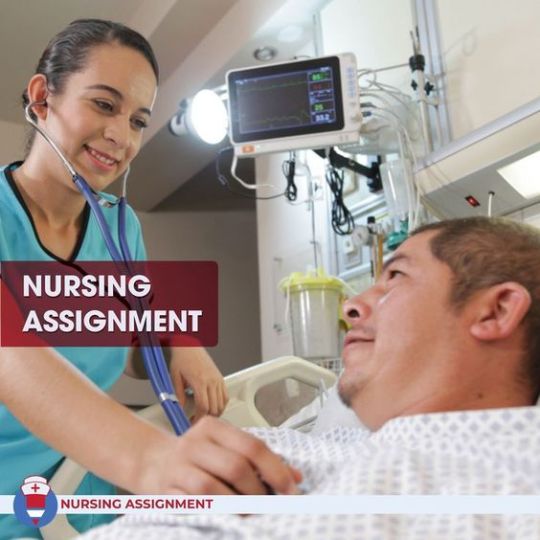
Symptoms: Sharp, intense vs. dull, persistent
Pain is a complex and subjective experience that can affect anyone. It can be acute or chronic, and the symptoms vary depending on its duration. Acute pain is usually sharp, intense, and sudden, while chronic pain is dull, persistent, and may last for months or even years.
Acute pain is often caused by an injury or illness that causes tissue damage. The intensity of the pain varies depending on the severity of the injury. For example, a paper cut might cause mild acute pain that goes away quickly; at the same time, surgery can cause severe acute pain that lasts for days or weeks. The symptoms of acute pain include sensitivity to touch, swelling at the site of injury or infection, rapid heart rate and breathing rate as well as flushing.
Chronic pain typically develops slowly over time and persists for longer than six months. Nursing Essay Helps.
Treatment: Medication, therapy, surgery options
Pain is a common ailment that can be acute or chronic. Acute pain refers to short-term discomfort that may arise from an injury, surgery, or medical procedure. Chronic pain, on the other hand, is long-lasting and may linger for weeks or even months. It can result from conditions such as arthritis, nerve damage, cancer, and fibromyalgia.
The good news is that there are several treatment options available for managing both acute and chronic pain. Medications such as non-steroidal anti-inflammatory drugs (NSAIDs), opioids, and muscle relaxants are widely used to relieve pain symptoms. However, these medications should only be taken under a doctor's prescription as they may have side effects such as addiction and abuse potential.
Therapy options such as physical therapy, occupational therapy, acupuncture, and massage can also help alleviate pain symptoms.
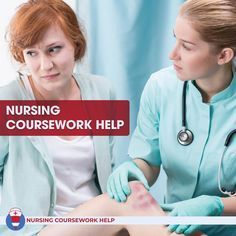
Impact on daily life: Disruptive vs. ongoing limitations
Pain is a common experience that everyone encounters at some point in life. It can be acute, such as a headache or an injury, or chronic, lasting for months to years. Both types of pain can impact daily life and have differing effects on physical and emotional well-being. Acute pain is often sudden and intense but has a finite duration, whereas chronic pain persists long-term and may be ongoing.
Acute pain can disrupt daily activities by causing discomfort, limiting mobility, affecting concentration levels, and decreasing productivity. For example, migraines may cause sensitivity to light or sound that impedes work tasks or social interactions. Similarly, acute back pain may make it difficult to carry out routine household chores like cleaning or cooking. These limitations are temporary since the underlying condition causing the acute pain is usually treatable. Nursing Essay Writing Service.
Conclusion In conclusion, acute and chronic pain are two distinct types of pain that require different approaches to treatment. Acute pain is a normal response to injury or illness and can be treated with medication, rest, and physical therapy. Chronic pain, on the other hand, is often more complex and requires a multidisciplinary approach that includes medication, cognitive-behavioral therapy, and alternative therapies such as acupuncture or massage. It is important to understand the key differences between these two types of pain in order to receive the most effective treatment. If you are dealing with either acute or chronic pain, it is recommended that you seek medical attention from a qualified healthcare provider. Don't suffer in silence - there are solutions available to help manage your pain effectively.
#nursing assignment writing service#nursing assignments help#nursing assignment writing#nursing dissertation help#nursing assignments helps#nursing dissertation writing service#nursing dissertation writing#online nursing assignment help#nursing assignment help#nursing assignment helps
0 notes
Text
Role and Responsibilities of Nursing Preceptors
Nursing preceptors play a critical role in the development and success of nursing students and newly-graduated nurses. As experienced professionals, they serve as mentors, teachers, and guides to help these individuals bridge the gap between theoretical knowledge and practical application in real-world healthcare settings. The responsibilities of nursing preceptors extend beyond simply supervising and evaluating their trainees; they also involve fostering critical thinking skills, instilling confidence, providing constructive feedback, and promoting professional growth. This article aims to explore the essential role and responsibilities of nursing preceptors in supporting the next generation of healthcare providers while ensuring high-quality patient care.
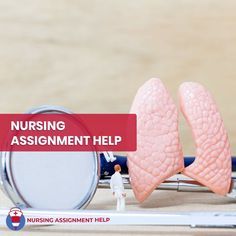
The Importance of Nursing Preceptors
Nursing preceptors play a crucial role in the development and education of nursing students. These experienced nurses serve as mentors, guides, and role models for aspiring nurses, providing them with invaluable hands-on experience and knowledge. The importance of nursing preceptors cannot be overstated, as they bridge the gap between classroom learning and real-world practice.
Firstly, nursing preceptors offer students a unique opportunity to observe and participate in clinical settings under their supervision. Through this mentorship, students gain practical skills that cannot be taught solely through textbooks or lectures. Preceptors guide students in performing various procedures, observing patient interactions, and making critical decisions in real-time situations. This direct exposure to the challenges and complexities of healthcare helps shape well-rounded nurses who are prepared to handle any situation that may arise.
Moreover, nursing preceptors provide emotional support and guidance to students during their transition from student nurse to professional nurse. Nursing Assignment Help.
Responsibilities of Nursing Preceptors
Nursing preceptors play a crucial role in the development and education of aspiring nurses. As experienced professionals, their main responsibility is to provide guidance and mentorship to nursing students during their clinical rotations. Firstly, preceptors are responsible for ensuring that students gain hands-on experience by supervising them on the floor and allowing them to participate in patient care activities. They must closely monitor students' performance, providing constructive feedback and assessing their competency in various nursing skills.
Secondly, nursing preceptors are accountable for helping students develop the critical thinking skills necessary for delivering safe and effective patient care. This involves encouraging them to analyze complex medical situations, make informed decisions, and prioritize nursing interventions accordingly. In addition to fostering critical thinking abilities, preceptors need to instill ethical values in their mentees by serving as role models themselves.

Benefits of Having a Nursing Preceptor
A nursing preceptor can be your guiding light as you navigate the challenging world of healthcare. One of the key benefits of having a nursing preceptor is the opportunity to gain firsthand experience and learn from their expertise. A preceptor, who is typically an experienced nurse, acts as your mentor and advisor during your clinical rotations or orientation period. They provide guidance on patient care, offer valuable insights into various healthcare settings, and help you develop critical thinking skills required in this demanding profession.
Another significant advantage of having a nursing preceptor is the personalized attention and support they provide. Unlike crowded lecture halls or busy clinical environments, a preceptor offers one-on-one teaching that fosters individual growth and development. This close relationship allows for tailored instruction based on your strengths, weaknesses, learning style, and career goals. Nursing Assignment Helps.
Challenges Faced by Nursing Preceptors
Being a nursing preceptor is not an easy task. It is a role that comes with its fair share of challenges and obstacles. One of the main challenges faced by nursing preceptors is the time constraint. As experienced nurses, they are expected to provide guidance and support to new nurses or nursing students during their clinical rotations. However, finding enough time in their already busy schedules can be difficult.
Another challenge that nursing preceptors face is the varying levels of competency and experience among their students. Some students may come into the clinical setting with little to no experience, while others may have more advanced skills. This creates a unique challenge for preceptors as they must adapt their teaching style and approach to meet the needs of each individual student.
Furthermore, another significant challenge faced by nursing preceptors is managing their own workload while also providing effective supervision and education to their students. Nursing Assignment Writing Service.
Tips for Effective Precepting in Nursing
Being a preceptor in nursing is an important role that requires both clinical expertise and effective teaching skills. As a preceptor, you are responsible for guiding and mentoring new nurses during their transition into the profession. To ensure an optimal learning experience for both the preceptor and the novice nurse, here are some valuable tips to enhance your precepting skills.
Firstly, establish clear expectations from the beginning. Clearly define the goals and objectives of the orientation period, as well as your role as a preceptor. This will help set a solid foundation for a successful working relationship with the new nurse. Additionally, encourage open communication by creating an environment where questions can be asked without fear of judgment or criticism.
Secondly, tailor your teaching style to meet individual learning needs. Recognize that every novice nurse is unique and may require different approaches to learning.
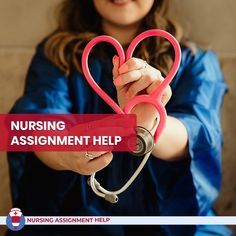
Conclusion
Nursing preceptors play a crucial role in the education and development of new nurses. Their responsibilities encompass guiding, teaching, and supporting these individuals as they navigate their transition from student to professional nurse. Preceptors must possess a strong clinical knowledge base, effective communication skills, and the ability to provide constructive feedback. By fulfilling their role with dedication and commitment, preceptors contribute to the growth and success of the nursing profession as a whole. Therefore, it is essential that healthcare institutions recognize the importance of preceptorship programs and ensure that adequate resources are allocated to support the ongoing training and development of nursing preceptors.
#nursing assignment writing service#nursing assignments help#nursing assignment writing#nursing dissertation help#nursing assignments helps#nursing dissertation writing#nursing dissertation writing service#nursing assignment helps#nursing assignment help#online nursing assignment help
0 notes
Text
Reflexology and its Effect on Arthritis
Arthritis is a chronic and often debilitating condition that affects millions of people worldwide. It is characterized by inflammation in the joints, which can cause pain, stiffness, and limited mobility. While there are various treatments available to manage arthritis symptoms, many individuals seek alternative therapies to complement their existing treatment plans. One such alternative therapy gaining popularity is reflexology.
Reflexology is a holistic therapy that involves applying pressure to specific areas on the feet or hands in order to stimulate healing responses throughout the body. Proponents of reflexology believe that by targeting certain reflex points on the feet or hands, they can help alleviate pain and promote relaxation, among other benefits.
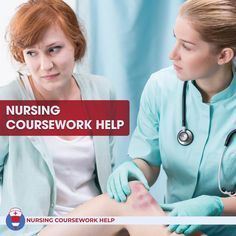
Understanding Arthritis: Types, Symptoms and Causes
Arthritis is a common condition that affects millions of people worldwide. Understanding the different types, symptoms, and causes is essential in managing this condition effectively. While there is no cure for arthritis, there are various treatments available that can help ease symptoms and improve quality of life. Additionally, lifestyle changes such as regular exercise and a healthy diet can also improve overall health and manage symptoms. It is important to seek medical advice if you suspect you have arthritis or are experiencing any joint pain or stiffness. With proper management and care, individuals with arthritis can lead fulfilling lives. Nursing Assignment Help.
What is Reflexology?
Reflexology is a natural and non-invasive therapy that can help improve overall health and well-being. By applying pressure to specific points on the feet, hands, and ears, reflexologists can help stimulate the body's own healing processes and promote relaxation. While it is not a substitute for medical treatment, reflexology can be an effective complement to traditional healthcare. If you are interested in trying reflexology therapy for yourself, be sure to seek out a qualified practitioner who can guide you through the process. Give your feet a break and try out this ancient holistic practice today!

Benefits
Reflexology is a holistic therapy that aims to reduce pain, alleviate stress and promote relaxation. The practice involves applying pressure to specific points on the hands, feet and ears, which are believed to correspond to different organs and systems in the body. Reflexology has been shown to be an effective treatment for a wide range of conditions, including arthritis.
Arthritis is a chronic condition characterized by inflammation of the joints. It can cause pain, stiffness and swelling in affected areas, making it difficult for sufferers to carry out everyday activities. Reflexology can help with arthritis symptoms by stimulating circulation, reducing inflammation and promoting relaxation. A study published in the Journal of Clinical Nursing found that reflexology was effective at reducing pain and improving mobility in patients with rheumatoid arthritis.
There is scientific evidence to support reflexology’s effectiveness as an adjunct therapy for people with arthritis. Nursing Assignment Writing Service.
Reflexology Techniques for Arthritis
Reflexology has been gaining popularity as a natural form of therapy for various conditions, including arthritis. Arthritis is a condition that affects millions of people worldwide, and it can cause severe pain and discomfort. Reflexology techniques have shown to be effective in reducing the symptoms of arthritis by targeting specific areas on the feet, hands, and ears.
The areas to target in reflexology for arthritis include the toes, heels, ankles, palms, wrists and ears. These areas correspond to different organs in the body which are linked to joints affected by arthritis. By applying pressure on these specific points using massage techniques or hand movements such as thumb or finger walking can help stimulate blood flow to those organs while also releasing tension in those affected parts.
Pressure points like the adrenal gland point located below the ball of your foot when pressed with firm pressure could be useful for relieving arthritis pain.
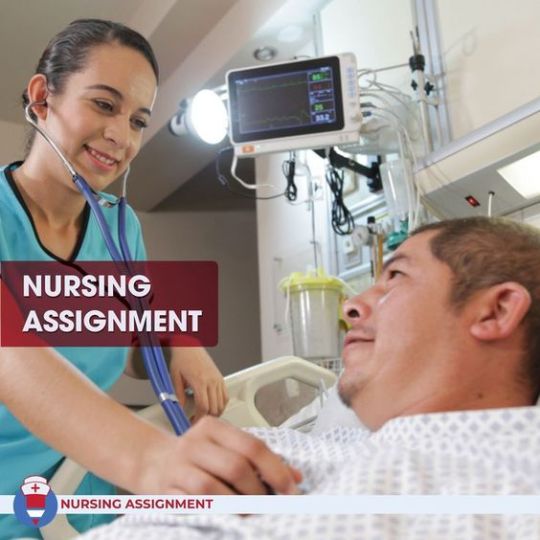
Precautions
Reflexology uses pressure points on the feet, hands or ears to relieve pain and promote relaxation. While it has been touted as a natural remedy for arthritis pain relief, there are some situations where reflexology may not be the best course of treatment. Firstly, if you have open sores or wounds on your feet or hands, you should avoid reflexology as it can cause further irritation and infection.
Secondly, if you are pregnant, it is recommended that you consult with your doctor before trying reflexology. Some pressure points in the foot and hand can stimulate contractions which may lead to premature labor. Additionally, women who have high-risk pregnancies or a history of miscarriage should also avoid this therapy altogether. Nursing Assignment Writing Service UK.
Conclusion: In conclusion, reflexology has shown promising results in reducing pain and improving joint mobility for people with arthritis. While research on this alternative therapy is limited, it can be a safe and non-invasive method to manage symptoms. It is important to note that reflexology should not replace medical treatment or medication prescribed by a physician. However, incorporating reflexology into a comprehensive arthritis management plan may provide additional relief for those living with the condition. If you are interested in trying reflexology, consult with a certified reflexologist and discuss your options with your healthcare provider. Don't let arthritis control your life – explore all available methods of managing your symptoms and living a healthy, active lifestyle.
#nursing assignment writing service#nursing assignments help#nursing assignment writing#nursing assignments helps#online nursing assignment help#nursing assignment help#nursing assignment helps
0 notes
Text
Developing Advanced Nurse Practitioner Role
The role of the advanced nurse practitioner (ANP) has evolved over the years, with increasing responsibilities and opportunities to offer an expanded range of services in healthcare. ANPs provide patient-centered care across various settings, from acute care hospitals to community-based clinics. With their advanced knowledge and skills, they play a crucial role in improving access to healthcare services and reducing healthcare costs.
In recent years, there has been growing interest in developing the ANP role further. This is driven by several factors, including the need for more efficient and effective models of care delivery, changing patient demographics and expectations, as well as advancements in technology and medical treatments.

Importance: Highlighting the Need for Advanced Practice Nurses
Advanced practice nurses (APNs) play an important role in the healthcare industry, as they possess specialized knowledge and skills that enable them to provide comprehensive care to patients. The demand for APNs has significantly increased over the years due to the changing healthcare landscape in which more emphasis is placed on preventative care, chronic disease management, and patient-centered care.
One of the primary reasons why APNs are essential is their ability to provide high-quality care that meets the unique needs of individual patients. They work collaboratively with other healthcare professionals such as physicians, pharmacists, and social workers to develop personalized treatment plans that focus on improving health outcomes. Additionally, APNs are trained in various aspects of patient care such as health promotion and disease prevention; managing acute and chronic illnesses; prescribing medication; ordering diagnostic tests; and providing education on healthy lifestyles. Nursing Assignment Help.
Education and Training
Advanced Practice Nurses (APNs) are registered nurses with advanced degrees and specialized training in a specific area of nursing practice. These professionals work closely with physicians to provide high-quality patient care, diagnose illnesses, prescribe medications, and perform other treatments. However, becoming an APN requires significant education and training beyond the basic nursing degree.
To become an APN, one must first obtain a Master's or Doctoral degree in Nursing from an accredited institution. Additionally, each state has its own requirements for licensing and certification as an APN. In general, these requirements include passing a national certification exam that demonstrates knowledge in the specific area of practice (such as Nurse Practitioner or Clinical Nurse Specialist) along with meeting certain educational standards.
The education and training required for APNs are essential to providing quality healthcare services to patients.

Scope of Practice
The role of an Advanced Nurse Practitioner (ANP) has evolved significantly over the years. ANPs are highly skilled healthcare professionals who have advanced training and education beyond that of a registered nurse. These practitioners can diagnose, treat, and manage patients with a wide range of medical conditions independently or in collaboration with other healthcare professionals.
With their extensive knowledge and expertise, ANPs are responsible for providing comprehensive care to patients across the lifespan. They work in various settings such as hospitals, clinics, nursing homes, schools, and private practices. Their scope of practice includes but is not limited to conducting physical exams; ordering diagnostic tests; prescribing medications; managing chronic illnesses like diabetes, hypertension, and asthma; performing minor procedures like suturing wounds or removing stitches; providing counseling on healthy lifestyle choices such as diet and exercise. Nursing Assignment Helps.
Challenges and Opportunities
The Advanced Practice Nurse (ANP) role has gained significant recognition in the healthcare industry. ANPs are registered nurses who have completed advanced education and clinical training to provide a higher level of care than traditional nurses. They serve as primary care providers, consultants, educators, researchers, and leaders in various settings such as hospitals, clinics, and private practices. Despite their critical role in improving patient outcomes and reducing healthcare costs, ANPs face several challenges that impact their ability to practice to the full extent of their training.
One significant challenge is the lack of uniformity in state regulations governing ANP practice. Each state has different laws regarding licensure requirements, scope of practice restrictions, prescribing privileges, and collaboration with physicians. This hinders the mobility of ANPs across state lines and limits their ability to provide optimal care for patients who live in rural or underserved areas where there is a shortage of healthcare professionals.
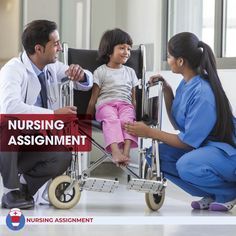
Future Outlook
The field of nursing is rapidly evolving, and advanced practice nurses (APNs) are at the forefront of these changes. As healthcare becomes increasingly complex, APNs are being called upon to play a more significant role in patient care. With their specialized training and expertise, APNs are uniquely positioned to provide comprehensive, high-quality care across a range of settings.
One major trend shaping the future outlook for advanced nursing practice is the shift towards team-based care. In this model, APNs work closely with other healthcare professionals such as physicians, pharmacists, and social workers to provide holistic, patient-centered care. This approach recognizes that improving health outcomes requires collaboration across disciplines and emphasizes communication and coordination between team members.
Another key development in advanced nursing practice is the rise of telehealth services. Telehealth allows patients to access healthcare remotely through technologies like video conferencing or secure messaging systems. Nursing Assignment Writing Service.
Conclusion In conclusion, the development of the advanced nurse practitioner role has been crucial in improving healthcare delivery and patient outcomes. The expanded scope of practice allows for greater autonomy and increased collaboration with other healthcare professionals. As the demand for primary care services continues to grow, there is a need for more advanced nurse practitioners who can provide comprehensive and efficient care to patients. It is important for healthcare organizations and policymakers to continue supporting the growth and development of this critical role in order to meet the changing needs of our healthcare system. Let us work together to further enhance the capabilities of advanced nurse practitioners and ensure that patients receive the high-quality care they deserve.
#nursing assignments help#nursing assignment writing#nursing assignments helps#online nursing assignment help#nursing assignment help#nursing assignment helps#nursing assignment writing service#Nursing Dissertation Help#Nursing Dissertations Helps#Nursing Dissertation Writing Service#Nursing Dissertation Writing Services#Nursing Dissertation Writing Service Uk#Online Nursing Dissertation Help#Nursing Dissertation Writing
0 notes
Text
Clinical governance in podiatric services
Clinical governance is an essential aspect of healthcare that ensures the provision of safe and effective services to patients. Podiatry, a branch of medicine focused on foot and ankle care, is no exception to this rule. Clinical governance in podiatric services involves the implementation of processes and procedures aimed at improving patient outcomes, reducing risks, and continuously monitoring the quality of care provided.
In recent years, there has been an increased focus on clinical governance in podiatric services due to several factors such as changes in healthcare policies and regulations, increasing demand for high-quality care by patients, and advancements in medical technology.

Why is it necessary for podiatric services?
Clinical governance refers to the systematic approach of ensuring the quality and safety of healthcare services provided to patients. It involves various activities such as risk management, performance monitoring, continuous improvement and accountability. For podiatric services, clinical governance is essential in maintaining high standards of care and ensuring patient safety.
One reason why clinical governance is necessary for podiatric services is that it helps to identify and manage risks associated with foot and ankle care. Podiatrists deal with a range of conditions such as diabetic foot ulcers, ingrown toenails, and sports injuries. By implementing effective risk management strategies through clinical governance, podiatrists can minimize the likelihood of adverse outcomes for their patients.
Moreover, clinical governance promotes continuous professional development among podiatrists. This ensures that they are up-to-date with current best practices in foot health care to provide better treatment options for their patients. Online Nursing Dissertation Help.
Key components
Clinical governance is an essential aspect of healthcare delivery that ensures accountability, transparency and quality within the system. It encompasses various components, including quality, safety, education and research. Each of these elements is crucial in delivering high-quality patient care while ensuring continuous improvement in healthcare services.
Quality is at the forefront of clinical governance. Quality improvement initiatives are implemented to enhance patient outcomes by improving processes and procedures within the healthcare system. These initiatives involve setting benchmarks for performance indicators, measuring outcomes against these benchmarks and implementing strategies to improve results if necessary.
Safety is another critical component of clinical governance. Ensuring patient safety involves identifying risks and hazards that may compromise patient care. Strategies such as incident reporting systems, risk management plans and regular auditing are employed to mitigate potential harm to patients while promoting overall safety in healthcare settings.
Education also plays a significant role in clinical governance.

How to incorporate clinical governance
Clinical governance is a system of managing and overseeing clinical services to ensure high-quality patient care. Implementation of clinical governance can be a challenging task, but it is essential for healthcare organizations to provide safe and effective services. Incorporating clinical governance involves several steps that healthcare providers must follow strictly.
The first step in incorporating clinical governance is to establish clear goals and objectives. These goals should be specific, measurable, achievable, relevant, and time-bound (SMART). Healthcare providers must also identify the stakeholders involved in the process. This includes patients, clinicians, support staff, regulatory bodies, and other stakeholders that may have an interest in the outcome.
Next, healthcare providers must implement processes that support the delivery of high-quality patient care. This requires developing policies related to patient safety, risk management strategies, quality improvement initiatives, and continuous professional development programs for clinicians and support staff. Nursing Dissertation Writing Service Uk.
Challenges and solutions
Clinical governance refers to the system by which healthcare providers ensure that they deliver high-quality, safe and effective care to their patients. In pediatrics, clinical governance presents unique challenges due to the diverse range of conditions that children present with, the complexity of diagnosis and treatment options available, and the legal and ethical considerations involved in caring for young patients.
One significant challenge facing pediatric clinical governance is ensuring that all clinicians have access to up-to-date information about best practices in pediatric care. With new research being published constantly, it can be challenging for clinicians to keep up with changes in recommendations for diagnosis and management of conditions. This highlights the need for ongoing education and training programs within health systems to ensure that healthcare providers are aware of new developments in pediatric medicine.
Another key issue facing pediatric clinical governance is the communication between different healthcare professionals involved in a child's care.

Benefits
Clinical governance in pediatrics is a framework that supports the delivery of safe and effective healthcare services. It is an integrated approach to quality improvement that involves continuous monitoring, assessment, and improvement of clinical care. Clinical governance aims to improve patient outcomes and service delivery by reducing errors, improving communication among healthcare professionals, and promoting evidence-based practice.
One of the key benefits of clinical governance in pediatrics is improved patient outcomes. By implementing effective clinical governance practices, healthcare providers can reduce the risk of adverse events such as infections, medication errors, or misdiagnosis. Clinical governance also ensures that patients receive appropriate care based on their individual needs and preferences. This results in better health outcomes for children with chronic conditions such as asthma or diabetes. Another benefit of clinical governance in pediatrics is improved service delivery. Nursing Coursework Writing Service Uk.
Conclusion
In conclusion, clinical governance is an essential framework for ensuring high-quality podiatric services. It involves a continuous process of monitoring and improving the quality of care provided to patients. Podiatrists should embrace clinical governance as a means of enhancing their practice and improving patient outcomes. By adhering to best practices and guidelines, podiatrists can ensure that they deliver safe, effective, and efficient care to their patients. In this way, they can contribute significantly to the overall goal of improving healthcare services. Let us continue to champion clinical governance in podiatric services for the benefit of all stakeholders involved.
#nursing assignment writing service#nursing assignments help#nursing assignments helps#nursing assignment writing#online nursing assignment help#nursing assignment help#nursing assignment helps
0 notes
Text
Foundations in Nursing Comfort Theory
Nursing is an integral part of the healthcare system, and nurses play a crucial role in ensuring that patients receive optimal care. Comfort is one of the essential components of nursing care, and it has gained significant attention in recent years. The concept of comfort theory in nursing was first introduced by Katherine Kolcaba in 1994, and since then, it has become an important aspect of nursing practice.
Comfort theory focuses on promoting comfort for patients and their families during times of illness or injury. It emphasizes the importance of addressing physical, emotional, and spiritual needs to promote healing and well-being. In this article, we will explore the foundations of nursing comfort theory, including its history, principles, and applications in clinical practice.
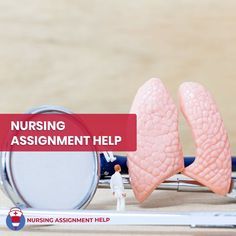
History and development of comfort theory
Comfort theory is a nursing theory that focuses on the importance of providing comfort to patients in order to promote healing and well-being. The theory was developed by Katharine Kolcaba, a nursing professor at the University of Akron, in the 1990s. Kolcaba recognized that many nurses were not adequately addressing their patients' emotional and psychological needs, which could impact their overall health outcomes. She believed that by using comfort measures such as touch, positioning, and environmental factors like lighting and noise levels, nurses could help reduce patient anxiety and improve their sense of well-being.
Kolcaba's comfort theory has since been widely adopted across the healthcare industry as a way to improve patient care. The concept of comfort has also been extended beyond just physical measures; it now includes social support, spiritual experiences, and other factors that can impact a patient's ability to cope with illness or injury. Nursing Assignment Writing Services UK.
Key concepts
Comfort is an essential aspect of healthcare, especially when dealing with patients who are critically ill or near the end of their lives. Defining comfort can be challenging since it encompasses a wide range of factors that contribute to the well-being and satisfaction of patients. Comfort refers to physical, emotional, and spiritual ease experienced by patients during their medical journey. It includes measures taken to promote relaxation, pain relief, symptom management, and emotional support.
Comfort measures are aimed at addressing the unique needs of each patient while acknowledging their individuality. They involve providing personalized care based on the patient's condition and preferences. For instance, nurses may adjust the lighting or temperature in a room to ensure that it suits the patient's comfort level. Pain management techniques such as massages or medication administration may also be used as part of comfort measures.

Applying comfort theory in nursing practice
Comfort theory is a nursing framework that focuses on the comfort of patients in all aspects of their care. It emphasizes the importance of providing physical, emotional, and spiritual comfort to promote healing and improve overall patient outcomes. Nurses who apply this framework strive to create an environment that promotes relaxation, reduces stress and anxiety, and fosters positive relationships between patients and healthcare providers.
One way nurses can apply comfort theory in their practice is by using non-pharmacological interventions such as massage therapy or aromatherapy to help manage pain and reduce stress. Additionally, nurses can provide emotional support by actively listening to patients' concerns and fears, empathizing with them, and offering reassurance when needed. They can also provide spiritual support by respecting patients' beliefs and values while ensuring they receive care that aligns with those beliefs. Nursing Assignment Writing Services.
Evidence-based practice
Evidence-based practice is a critical component of healthcare, and it involves the integration of clinical expertise, patient values, and available research evidence to make informed decisions about patient care. Comfort theory is one such approach that has been gaining popularity in recent years as an evidence-based practice. This theory aims to improve patient comfort by addressing physical, emotional, social, and spiritual concerns through a person-centered approach.
Research studies have shown that comfort theory can significantly improve patient outcomes. For instance, a study conducted in a long-term care facility found that implementing comfort measures based on the comfort theory led to improvements in pain management, sleep quality, and overall well-being among patients. Another study conducted with hospitalized children also reported similar positive effects on pain management and overall satisfaction with care when using comfort interventions rooted in the comfort theory.
Moreover, this approach has proven effective across various patient populations and settings.
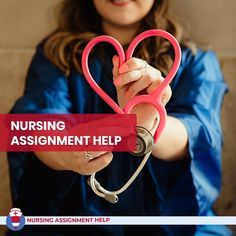
Challenges and future directions
The concept of comfort has been present in nursing since its inception, the development of comfort theory has provided a framework for nurses to better understand and provide comfort care. However, like any other theory, comfort theory also faces limitations and challenges that must be addressed to promote its growth and relevance in the future.
One challenge in implementing comfort theory is its subjective nature. Comfort is different for every individual, making it difficult to quantify or measure objectively. This subjectivity can lead to differences in how healthcare professionals interpret and provide comfort care, which may affect patient outcomes. Additionally, providing comprehensive comfort care may require additional resources beyond what many healthcare organizations currently have available.
Despite these challenges, there is potential for growth in the field of comfort theory. Nursing Assignment Writing Service
Conclusion:
In conclusion, the Comfort Theory is a valuable framework for nurses to utilize in their practice. With its focus on improving patient comfort and overall well-being, it aligns with the core values of nursing. The three central components of environmental, physical, and psychospiritual comfort provide nurses with a holistic approach to care. By incorporating this theory into their practice, nurses can improve patient outcomes and promote healing. It is important for nursing students and professionals alike to continue learning about the Comfort Theory and its applications in order to provide the best possible care for their patients. Let us strive towards providing comfort as a standard of care in nursing.
#nursing assignment writing#nursing assignments help#nursing assignments helps#nursing assignment helps#nursing assignment writing service#online nursing assignment help#nursing assignment help
0 notes
Text
Health Literacy And The Impact On Health
Health literacy is a critical component of overall health and wellness. Defined as the ability to obtain, understand, and use information to make informed decisions about one's health, it has been linked to better health outcomes and reduced healthcare costs. In contrast, low health literacy has been associated with poor health outcomes and increased healthcare utilization.
This article will explore the concept of health literacy and its impact on an individual's physical and mental well-being. We will examine how low levels of health literacy can affect access to care, medication adherence, chronic disease management, and overall quality of life. Additionally, we will discuss strategies for improving health literacy among individuals and communities to promote better health outcomes for all.

Definition of Health Literacy
Health literacy is a term used to describe an individual's ability to understand and use medical information. It refers to the capacity of individuals to obtain, process, and comprehend basic health information necessary for making informed decisions about their health. Health literacy encompasses not just the ability to read or understand medical jargon but also includes being able to navigate healthcare systems, communicate effectively with healthcare providers, and make informed decisions about one's own health.
Low health literacy levels can have serious consequences for individuals' health outcomes. Those with low health literacy are more likely to engage in unhealthy behaviors such as smoking, lack of exercise, and poor diet choices. They are less likely to take medications as prescribed and may have difficulty understanding medication labels or dosage instructions. Online Nursing Assignment Help.
The Importance of Health Literacy
Health literacy is the ability to obtain, understand, and apply health information in a way that promotes good health outcomes. It involves more than just being able to read medical instructions or understand doctor's orders. Health literacy encompasses a wide range of skills and knowledge that are essential for making informed decisions about personal healthcare.
The importance of health literacy cannot be overstated. Studies have shown that individuals with low health literacy skills are more likely to have poor health outcomes, including higher rates of chronic disease, hospitalization, and mortality. They may also be less likely to seek preventative care or follow recommended treatment plans.
Improving health literacy can lead to better overall health outcomes for individuals and communities alike. By increasing access to clear and concise information about healthcare options, people can make more informed decisions about their own care. This not only benefits individual patients but also reduces healthcare costs and promotes greater public health awareness overall.

Factors Affecting Health Literacy
Health literacy is a crucial component of our overall well-being, and the factors that impact it must be taken seriously. Socioeconomic status, education, and age have all been shown to play a significant role in determining an individual's level of health literacy. It is evident that those who are most vulnerable to poor health outcomes are also those who may face the greatest challenges when it comes to accessing and understanding vital healthcare information. By recognizing these disparities and working to address them head-on, we can help ensure that everyone has equal access to the resources they need to make informed decisions about their health. Let us take a step forward together toward improving health literacy for all individuals. Nursing Assignment Writing.
The Impact of Low Health Literacy
Low health literacy can have a significant impact on an individual's ability to understand and follow medication instructions, as well as practice proper self-care. This can lead to negative health outcomes, increased healthcare costs, and reduced quality of life. It is essential that healthcare providers and policymakers prioritize addressing the issue of low health literacy through patient education, clear communication strategies, and access to resources. By improving health literacy levels among individuals, we can empower them to take control of their own health and make informed decisions about their care. Let's work together towards a healthier future for all.

Strategies to Improve Health Literacy
Strategies such as clear communication and accessible materials can help individuals better understand complex health information. Healthcare providers and organizations must prioritize the development and implementation of these strategies to promote better health outcomes for all. As a society, we must continue to advocate for greater access to resources that improve health literacy in order to empower individuals with the knowledge they need to take control of their own health. Let us work together towards a future where everyone has access to clear and understandable health information. Nursing Assignment Writing Services.
Conclusion:
Health literacy is a crucial aspect of maintaining good health. It involves the ability to understand and use health information to make informed decisions about our well-being. Low health literacy can lead to poor health outcomes, including higher rates of hospitalization and mortality. It is important that individuals take steps to improve their health literacy, such as asking questions and seeking out reliable sources of information. Additionally, healthcare providers should strive to communicate clearly with their patients and provide accessible resources. By improving health literacy, we can empower individuals to take control of their own health and ultimately improve the overall health of our communities.
#nursing assignment writing service#nursing assignments help#nursing assignments helps#nursing assignment helps#nursing assignment help#online nursing assignment help#nursing assignment writing
0 notes
Text
Nosocomial Infections
Nosocomial infections, also known as healthcare-associated infections (HAIs), are a major concern in the healthcare industry. These infections occur as a result of medical interventions such as surgeries, the use of invasive devices or procedures, and exposure to harmful microorganisms present in healthcare facilities. According to the Centers for Disease Control and Prevention (CDC), approximately 1 in 31 hospital patients have at least one HAI on any given day.
Nosocomial infections can range from mild outbreaks to severe epidemics that affect large populations. They can be caused by bacteria, viruses, fungi, or parasites and may lead to various complications including sepsis, pneumonia, urinary tract infection (UTI), and surgical site infection (SSI). Nursing Assignment Writing Services.

Causes of Nosocomial Infections
Nosocomial infections are a major concern for patients and healthcare providers alike. These infections occur as a result of medical treatment in a hospital or healthcare facility and can range from minor skin infections to life-threatening illnesses such as pneumonia or sepsis. The causes of nosocomial infections are numerous, but some common factors that contribute to their development include poor hygiene practices, antibiotic resistance, and compromised immune systems.
One major cause of nosocomial infections is poor hand hygiene practices among healthcare workers. Failure to properly wash hands before and after patient contact or between procedures can lead to the spread of harmful bacteria and viruses from one patient to another. Another contributing factor is the overuse of antibiotics, which can create resistant strains of bacteria that are difficult to treat with traditional medications. Nursing Assignment Writing Service
Common Types of Nosocomial Infections
Nosocomial infections, commonly known as hospital-acquired infections, are infections that patients acquire while receiving medical treatment in a healthcare setting. These infections can be caused by bacteria, fungi, viruses or other pathogens and can occur within 48 hours of admission to the hospital or even after discharge. While nosocomial infections are common in any healthcare facility, they pose serious threats to patient safety and can lead to severe health complications.
One of the most common types of nosocomial infection is urinary tract infection (UTI). UTIs occur due to catheterization during surgery or prolonged bed rest. Bacteria from outside the body get introduced into the urethra through such invasive procedures and travel up into the bladder where they multiply causing painful symptoms like burning during urination, frequent urge to urinate, and pain in the pelvic area.

Prevention and Control Measures
Nosocomial infections are a major concern in hospitals and healthcare facilities around the world. These infections, also known as healthcare-associated infections (HAIs), are caused by microorganisms such as bacteria, viruses, and fungi that thrive in hospital environments. The most common types of nosocomial infections include urinary tract infections, surgical site infections, bloodstream infections, and pneumonia.
Preventing and controlling nosocomial infections is crucial to ensure patient safety and improve the quality of care provided by healthcare facilities. One of the most effective ways to prevent these types of infections is through proper hand hygiene practices. Healthcare workers must wash their hands thoroughly before and after attending to patients. Nursing Assignment Writing Service Uk
Impacts of Nosocomial Infections on Patients
Nosocomial infections are a growing concern in healthcare facilities worldwide. These infections are caused by bacteria, viruses, or fungi that thrive in healthcare settings and can spread from patient to patient. The effects of nosocomial infections on patients can be severe and long-lasting. They can lead to prolonged hospital stays, increased mortality rates, decreased quality of life, and higher medical costs.
The most common types of nosocomial infections include pneumonia, bloodstream infections, urinary tract infections (UTIs), surgical site infections (SSIs), and gastrointestinal infections. Patients who have weakened immune systems due to underlying conditions such as diabetes or cancer are more susceptible to these types of infections. Furthermore, patients who undergo invasive procedures or surgeries are at an increased risk of developing SSIs.

Conclusion
In conclusion, nosocomial infections pose a significant threat to patients in healthcare settings. Preventative measures such as hand hygiene, disinfection protocols, and isolation precautions are effective ways of controlling the spread of these infections. However, education and training of healthcare workers on infection control practices are essential to ensure that these measures are consistently implemented. It is important for healthcare facilities to invest in resources and technology that can aid in the detection and prevention of nosocomial infections. By working together and taking proactive steps, we can reduce the incidence of nosocomial infections and improve patient outcomes. Let's prioritize infection control today for a healthier tomorrow.
#nursing assignment writing service#nursing assignments help#nursing assignment helps#nursing assignment writing#nursing assignment help#online nursing assignment help#nursing assignments helps
0 notes